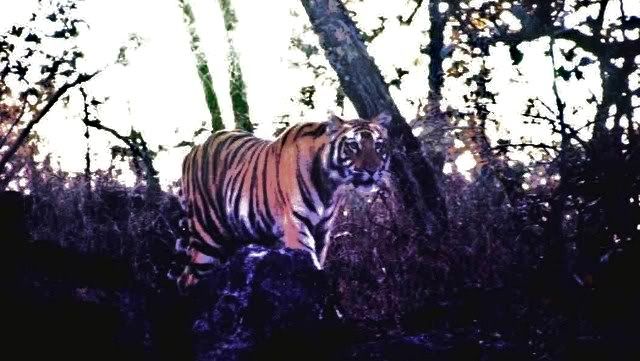
Sita was well past her prime when I first met her, but I mistook her to be a youngester when I first laid eyes on her. She'd had 7 litters of cubs, and had successfully brought up 21 cubs to adulthood - a major feat. She was featured on the front cover of the December 1997 issue of National Geographic - a real international star.

It was in 1998, when I went to India for the second time, and this time, in addition to my field work, I was the "star" of the "Champion of the Bengal Tiger" episode of the TV documentary series Champions of the Wild aired in 20 countries. I had the great privilege to observe Sita and her cubs at close quarters. She was a wonderful mother. With all due respect to lions, Sita was a different kind of mother. No matter how hungry she was, she let her cubs eat first. In 1999, I returned to Bandhavgarh, in part to see Sita. Upon my arrival, I was treated like a celebrity. I found myself in a national park in mourning. In the intervening 12 months, Bandhavgarh had lost at least 10 of its estimated 40 tigers, including Sita and her cubs. We eventually caught her poacher along with rolls of tiger skin and sacks of tiger bone, some still moist, with ants crawling all over them. Among the 6 tiger skins I examined, one was Sita's. I matched the facial markings to the Sita in my photographs. It was a heart-breaker.
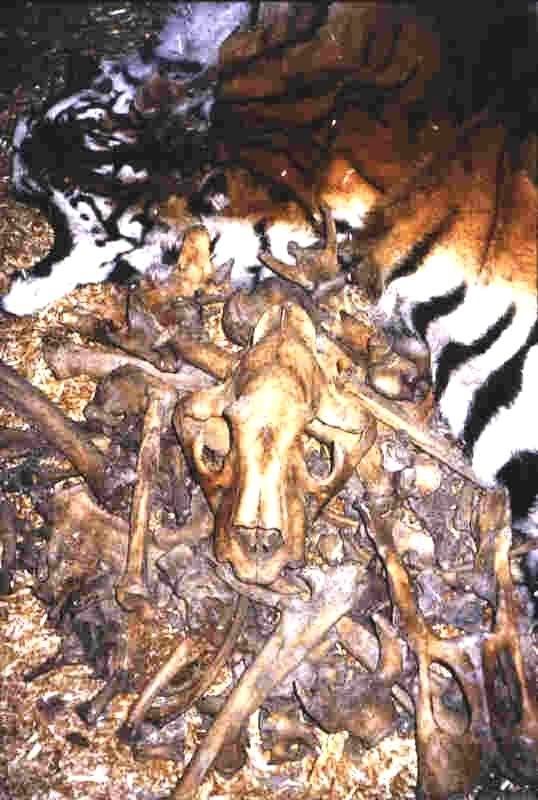
Pipal was a young tigress who had just given birth to her first litter. Our first encounter was unpleasant, to her. My elephant (disclaimer: I will never ride an elephant again) got too close and disturbed her noon-time nap, and she was none-too-pleased, especially since her cubs were hidden nearby.
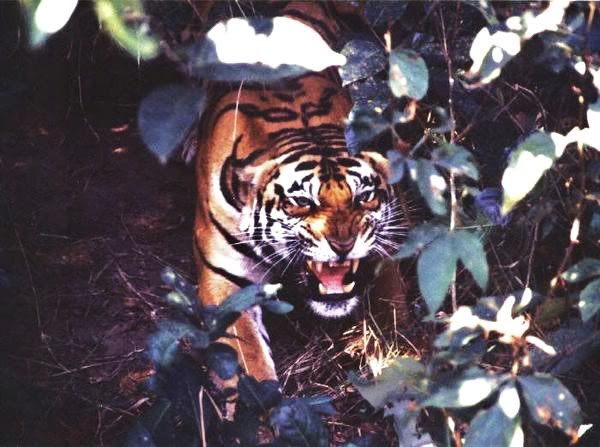
Another time, while driving down a park road, I noticed a sambar deer standing four square, tense as a piano string, staring intensely in the direction my jeep was going. It did not pay me the least bit of attention. I slowly drove on, and within 100 yards I saw Pipal sitting tensely at the foot of a pipal tree. She did not pay me the least attention either, but was staring intensely in the direction from which I'd come. The deer and the tiger could not see each other, but they were aware of each other's presence. The air was still, and the cicadas were singing. Pipal slowly raised herself from the ground, and began inching forward. The forest floor was covered with dry leaves, but the way she placed her feet, there was not a rustle to be heard.

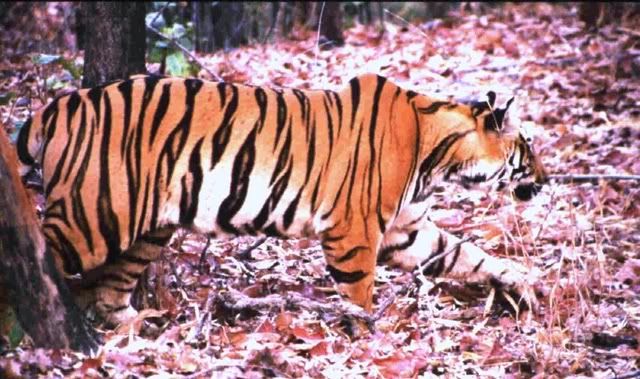
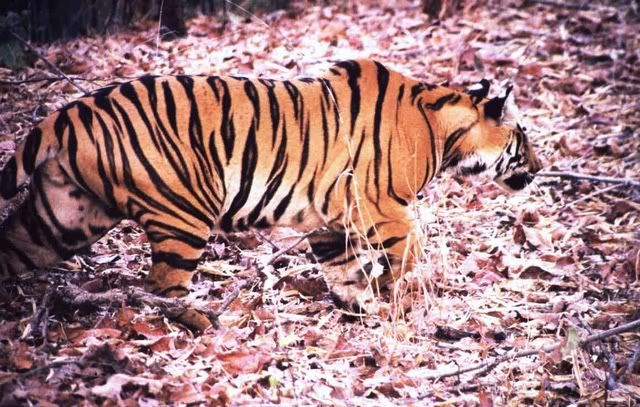
After about three breathless minutes, she suddenly dashed forward, and in a split second, was gone, forever.
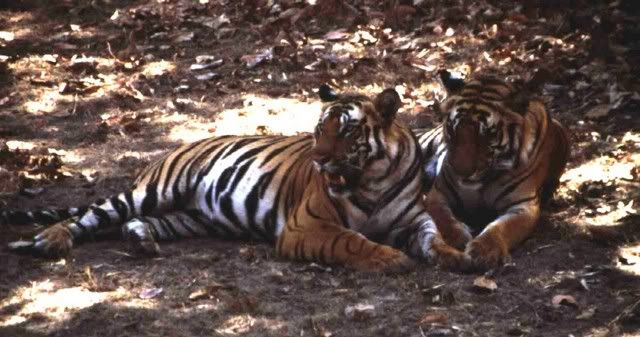
Ajuna and Shiva were two 3 year-old sibblings, a brother and a sister, who had left their mother some months before, and still hunted together, and in spite of their youth and inexperience, they managed to amaze me with their intelligence. Deer have super-keen hearing, and what they listen for are the very faint sounds made by a tiger as she moves through the undergrowth, sound so faint to be below human hearing. Elephants make a lot of noise, which are ignored by tigers and deer while a hunt is in progress. On this day, I was on an elephant, moving noisily through the forest. Suddenly, I saw two cheetal deer about 150 yards ahead. The undergrowth was dense, with a 30-ft visibility, but up on elephant back, I could see for at least 300 yards. These two deer were looking tensely in my direction, and I thought they were looking at the elephant. But something caught my eyes from underneath. It was Ajuna and Shiva, one on each side of the elephant. I then realized - they were using the noise made by the elephant to cover their own sound. The wind was blowing from ahead and they could smell the deer, and could not see them. Eventually, they did charge. Unfortunately, they were still too far, and the deer got away.
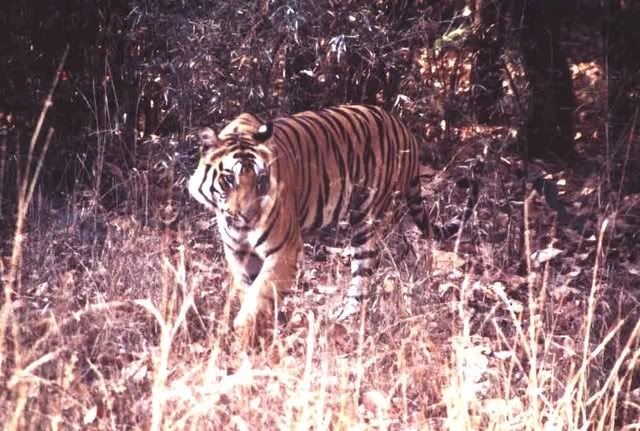
Charger was Sita's mate, although within his 50 sq.mi. territory lived three other tigresses. He acquired the unusual name (for an Indian tiger) because he had the funny habit of mock-charging tourist jeeps, and when the tourists began to scream he would calmly walk away. Now, since I was a "professional", I had a high tiger-sighting rate, maybe one sighting every two outings, whereas some tourists may not see a tiger at all. Soon, my "luck" was known among the tourists at the lodge where I was staying. One day, a Germany photography named Axel approached me and asked me if he could come with me in my next outing, since he had had no luck seeing a tiger whatsoever, much less photogragh one. So, out we went in my jeep. Sure enough, charger showed up, and was just standing there at the edge of a thicket about 50 yards away. Axel quickly grabbed his camera and began to aim it at Charger. Without warning, Charger did what he was expected to do. Axel screamed and dropped his camera. Charger swerved to the left and dove into another thicket, leaving a cloud of red dust behind. Axel did nto get a single picture. I let him have one of mine.
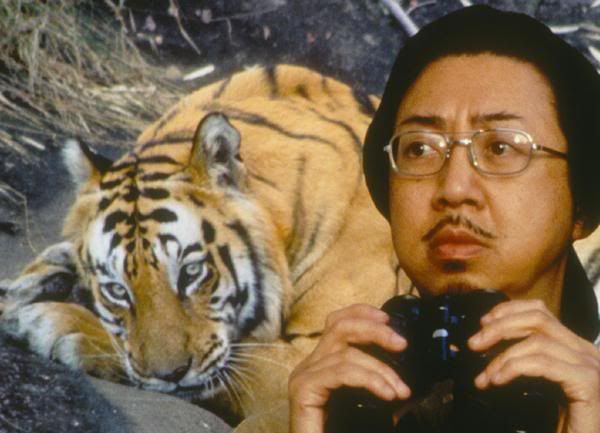
Sita and Charger are both gone now. I hope that Pipal, Ajuna and Shiva are still thriving.
All photos by Anthony Marr (except the one from National Geographic).
Anthony Marr, founder and president
Heal Our Planet Earth (HOPE)
www.HOPE-CARE.org
www.MySpace.com/AnthonyMarr
www.YouTube.com/AnthonyMarr
www.HomoSapiensSaveYourEarth.blogspot.com
www.ARConference.org
www.AnimalVoices.org
No comments:
Post a Comment